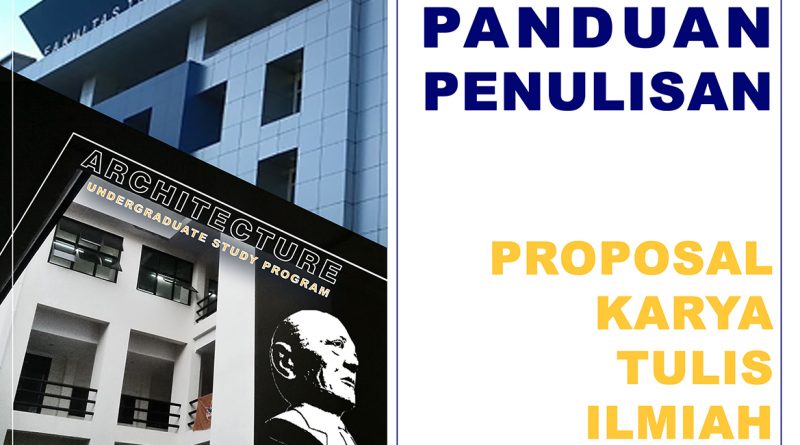Guidelines for Writing Scientific Paper Proposals
SCIENTIFIC WRITING PROPOSAL GUIDE
I. WRITING
The scientific paper proposal/thesis title consists of three parts, namely the beginning, the main part and the end.
- Beginning part
Consists of :
- Title Sheet
- Approval sheet for prospective supervisors
- List of contents
- Main Section
Consists of several chapters, the minimum systematic as follows:
Chapter I Introduction
This first chapter consists of: background, problem formulation, problem definition, research objectives, and research benefits.
- Background: contains relevant facts as a starting point for formulating research problems, as well as reasons why the problems raised are considered interesting and important to research. In the background, a brief description of the theory, research results or personal experiences related to the main problem under study is presented. Thus, the problem chosen for research has a solid foundation.
- Problem formulation: is a statement regarding the scope of the problem to be studied based on identification in the background. The formulation of the problem is stated in the form of declarative sentences or assertive interrogative sentences.
- Problem limitation: contains conditions or scope so that the problem to be studied/discussed so as not to widen/expand.
- Research objectives: must mention the specific objectives to be achieved in the research.
- Research benefits: expresses the author's expectations, both theoretical and practical. Theoretical benefits are related to the development of knowledge, while practical benefits are directly related to users to support development.
Chapter II : Theoretical Foundation/Theoretical Framework
Consists of four to six pages. Contains library materials presented in the theoretical basis. Should be relevant to the problem of research / writing. The theoretical basis serves to sharpen the problem, study the approaches that have been taken, what has been produced by previous researchers/writers, and at the same time to avoid unnecessary repetitions and avoid mistakes faced by previous researchers/writers.
The presentation of the theoretical basis can also analyze the development of science/research results in scientific journals that are relevant to the scope of research/writing.
The theoretical basis materials can be taken from various sources such as research journals, theses, research reports, textbooks, papers, seminar reports and scientific discussions, official government publications and other institutions. Lecture notes or practicum guides should not be used as a reference.
Chapter III: Research Methodology/Framework/Implementation
Usually contains the method used and the design framework of the thesis to be made.
Also contains an overview of the design (flowcharts, storyboards, layouts) that will be made so that students are considered to have mastered the material and are ready to proceed to making research.
- Final Part
Consists of :
- Bibliography
The bibliography contains sources that are used as real references by the author in writing KTIS. These sources may consist of: scientific journals and magazines, textbooks, proceedings, abstracts from an article, scientific papers, and other sources relevant to the written KTIS.
- Tables and Figures
- Table
The table number, followed by the title, is placed symmetrically above the table, without ending with a period. Tables should not be cut off, unless they are so long that they cannot be typed on one page. On the advanced page, the table also includes a header and the table number and the word continuation are listed on the upper left edge of the manuscript, without a title.
-
- Picture
Graphs, diagrams, monograms, photographs, maps, sketches, as well as drawings, and technical drawings are all referred to as drawings. Figure number followed by the text, typed symmetrically on manuscript paper and placed under the image, without ending with a period, Images must be placed on one page, must not be cut off, and must be symmetrical. Image captions are placed in the vacant parts in the image or below the image after the image title. If the image is taken from a library, the author's name, year of publication in brackets should be written and written behind the title of the image.
II. TYPE FORMAT
The paper used must be white in size A4S (21 Smm x 297mm) with a weight of 70 or 80 gr/m2. Chapter delimiters are not allowed.
Typing limit 4 ( four) cm from the left side of the paper; right side, bottom side, and top side are 3 (three) cm. This margin does not include page numbers. It is not allowed to use headers and or footers.
KTIS manuscripts are typed neatly with a computer. It is recommended to use Times New Roman font size 12. The title of the sub-chapter is typed in bold on the left side of the page with the first letter of each word typed in capitals other than conjunctions. The title of the sub-chapter is typed starting from the left side of the page and is underlined. Only the beginning of the sentence is capitalized.
